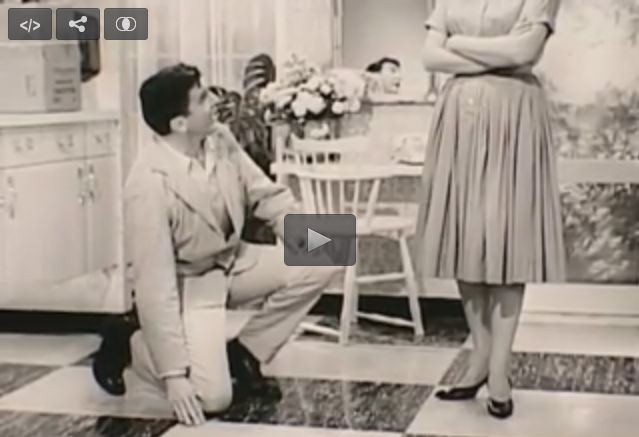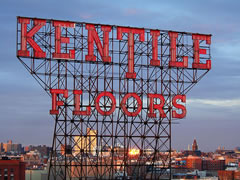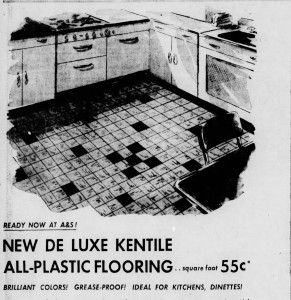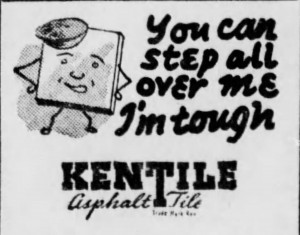THAT KENTILE FLOORS SIGN IN BROOKLYN

As the salvos are fired across the broadsides of those who would tear down Brooklyn’s famous Kentile Floors sign, few know the history behind the company, its founder, and its legacy.
 Kentile was a revolutionary floor covering that was easy to install and extremely resistant to fire.
Kentile was a revolutionary floor covering that was easy to install and extremely resistant to fire.

But Kentile was a start-up in the late 19th century in Brooklyn that made its inventor rich and many, many housewives much, much happier in their kitchens.
IN THE BEGINNING
In 1898, Arthur Kennedy founded Kentile in Brooklyn. Kentiles were “large durable tiles made of a range of materials that were available in dozens of colors and patterns.” Kentile Flooring was primarily marketed in Brooklyn and the surrounding region back then, but eventually, as they became popular, spread their availability throughout the country.

By the ’50s and ’60s, Kentile Floors had become one of America’s largest manufacturers of super-resilient floor tile, and it was a national tile distributor. The Kentile factory at Second Avenue in Gowanus – where the Kentile Floors sign is currently being removed – employed more than 400 people at its peak in the 1960s.
The company’s futures waned though by the 1980s when its products’s strongest feature – asbestos – was found to contain cancer-causing carcinogens. As Kentile removed asbestos from their products, the lawsuits piled up, and by by 1992 they had filed for bankruptcy. A few years later Kentile production ended altogether.
The sign is expected to be re-installed somewhere within the Gowanus.
———————————————————————————————————————–
This story was composed from research performed by The Brownstone Detectives. Let us do an in-depth investigation of your house and its former owners and produce your very own House History Book. Your hardbound coffee table book will include an illustrated and colorful narrative timeline that will bring the history of your house to life. Contact us today.